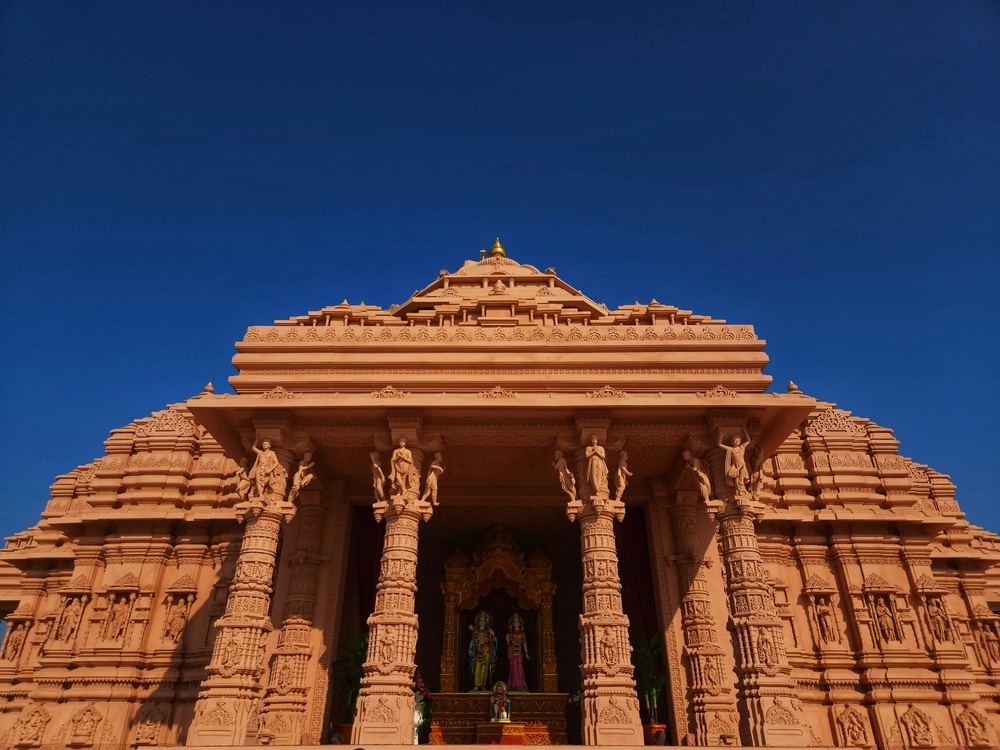Ayodhya, the ancient city revered as the birthplace of Lord Rama, holds a prominent place in Hindu mythology and Indian culture. With its rich tapestry of temples, ghats, and spiritual stories, Ayodhya draws pilgrims and tourists from all over the world. But before planning your trip to this sacred city, a key question arises — when is the best time to visit Ayodhya?
To help you make the most of your spiritual journey, this guide explores the city’s seasonal weather, major festivals, and essential travel tips. Whether you’re visiting for devotion, culture, or heritage, choosing the right time can make your experience even more fulfilling.
Weather Overview: Seasons in Ayodhya
Ayodhya experiences a typical north Indian climate, which can be divided into three primary seasons: winter, summer, and monsoon. Each brings its own flavor and atmosphere.
1. Winter (October to March): The Best Time to Visit Ayodhya
Winter is widely regarded as the best time to visit Ayodhya. The weather is cool and pleasant, with daytime temperatures ranging between 10°C and 25°C. This makes exploring the city’s many religious and historical sites much more comfortable.
Why Winter Is Ideal:
- Perfect weather for temple visits and outdoor exploration
- Best time to walk along the scenic ghats of the Saryu River
- Comfortable for all age groups, including senior pilgrims
- Opportunity to attend iconic festivals (more below)
If you want to explore Ayodhya without battling intense heat or humidity, winter offers the perfect window.
2. Summer (April to June): Hot and Dry
Summer in Ayodhya can be challenging due to high temperatures, often soaring above 40°C. Sightseeing during the day can be uncomfortable, especially for those not used to the scorching north Indian heat.
Things to Consider:
- Daytime travel can be exhausting
- Sites are less crowded, ideal for a quieter pilgrimage
- Carry sun protection, stay hydrated, and plan outdoor activities early in the morning or after sunset
While summer isn’t the best time to visit Ayodhya, budget travelers who can tolerate the heat may still find value in the off-season discounts.
3. Monsoon (July to September): Lush but Wet
Monsoon transforms Ayodhya’s landscape with refreshing greenery and frequent rain showers. Temperatures hover around 25°C to 35°C, but high humidity can be uncomfortable.
Pros:
- Scenic views, particularly near the river and gardens
- Fewer tourists, which means more peaceful temple experiences
- Reduced hotel and travel rates
Cons:
- Rain can disrupt outdoor plans and make roads slippery
- Sudden showers may limit movement between temples and sites
Monsoon can be a peaceful time for seasoned travelers or repeat visitors, but first-timers may find winter more convenient.
Festival Calendar: When Culture Comes Alive
Ayodhya is not just about temples—it’s also a vibrant hub of cultural and religious festivals. Planning your trip around key festivals can enhance your experience tenfold.
1. Diwali (October–November)
Perhaps the most significant festival in Ayodhya, Diwali is celebrated here with unmatched grandeur. The city lights up with over a million diyas (lamps) on the banks of the Saryu River in a celebration called Deepotsav.
- Streets are decorated with rangoli and lights
- Cultural performances and grand processions
- Spiritual energy is at its peak
2. Ram Navami (March–April)
This festival marks the birth of Lord Rama and is one of the holiest occasions in Ayodhya. A massive celebration takes place at Ram Janmabhoomi, and devotees from across India attend the spiritual events and processions.
3. Makar Sankranti (January)
This harvest festival is celebrated with river bathing rituals and temple ceremonies. The ghats come alive with early morning prayers and spiritual activities.
4. Shravan Month (July–August)
Devotees flock to Shiva temples in Ayodhya during this holy month. While this overlaps with the monsoon, the devotion of pilgrims remains strong.
Travel Tips for Visiting Ayodhya
To ensure a smooth and fulfilling experience, keep these travel tips in mind:
1. Dress Modestly
Ayodhya is a sacred destination, so traditional or modest attire is recommended, especially when entering temples.
2. Plan Ahead During Festivals
Hotels and transportation get booked quickly during major festivals. Make reservations well in advance if you’re visiting during Diwali or Ram Navami.
3. Local Guides Can Enrich Your Visit
Consider hiring a certified local guide to understand the mythology, history, and lesser-known stories behind the landmarks.
4. Stay Near Main Attractions
Choose accommodations near Ram Janmabhoomi or Hanuman Garhi for convenient access to the most visited temples and ghats.
5. Respect Local Customs
Photography may be restricted in some temples. Always seek permission and respect local traditions.
Conclusion: Choosing the Right Time for a Sacred Experience
So, when is the best time to visit Ayodhya? Without a doubt, the months from October to March offer the ideal weather, the most vibrant festivals, and the most comfortable travel experience. Whether you wish to witness the divine lights of Diwali, join the Ram Navami celebrations, or enjoy a peaceful spiritual retreat during winter, this is the time when Ayodhya truly shines.
For those seeking solitude and spiritual reflection, the monsoon season can also be an option. However, if you’re not a fan of heat, summer is best avoided.
No matter when you visit, Ayodhya’s sacred energy and cultural depth promise an unforgettable journey into the heart of India’s spiritual heritage.



